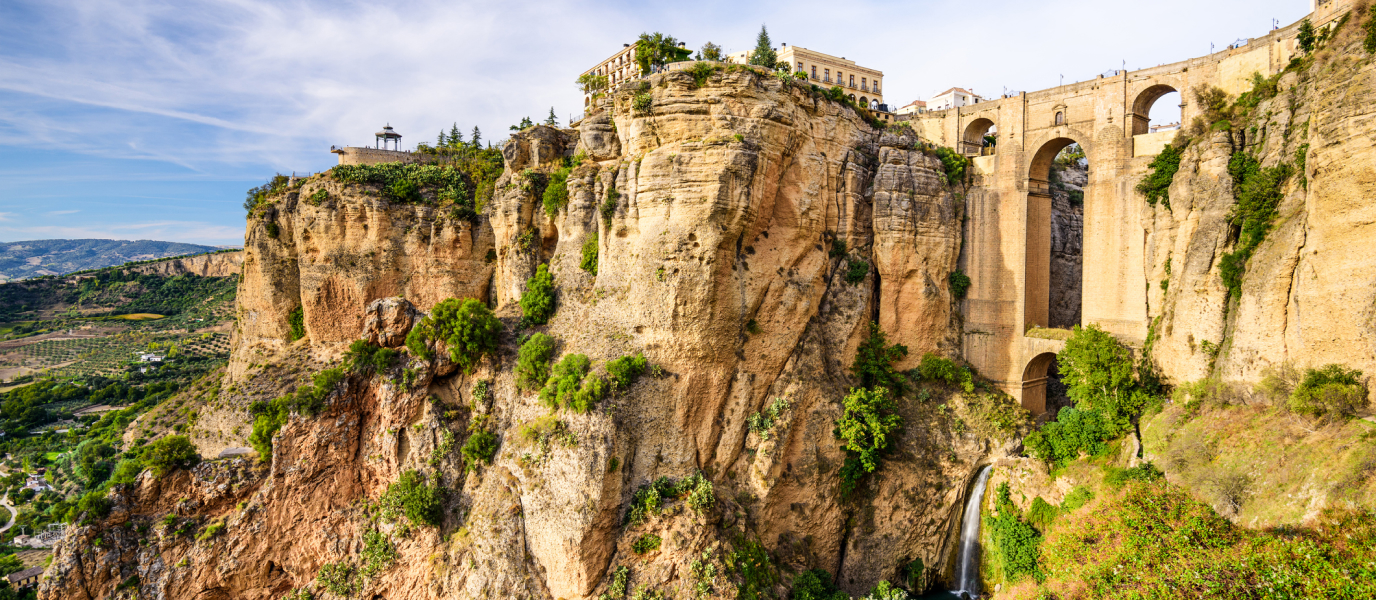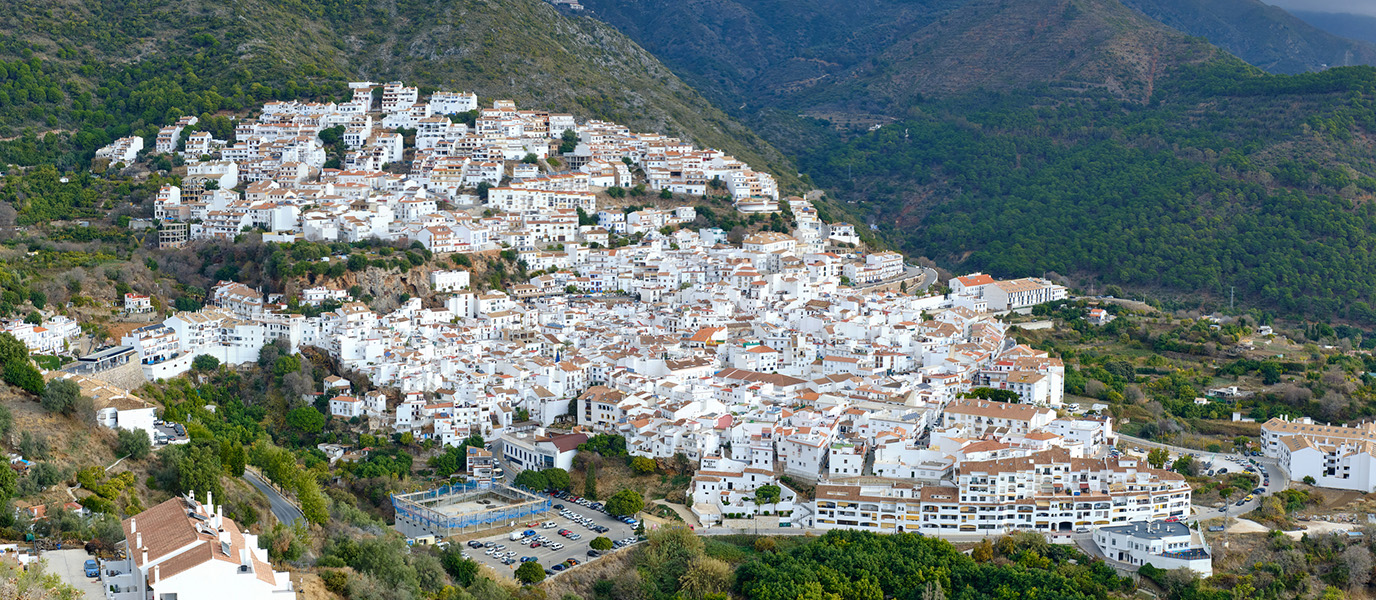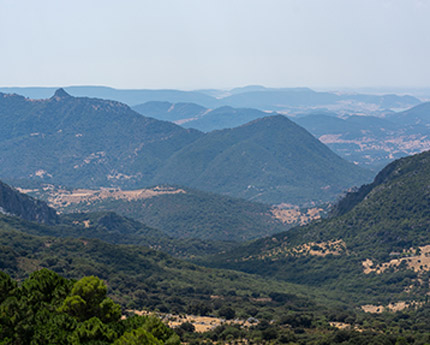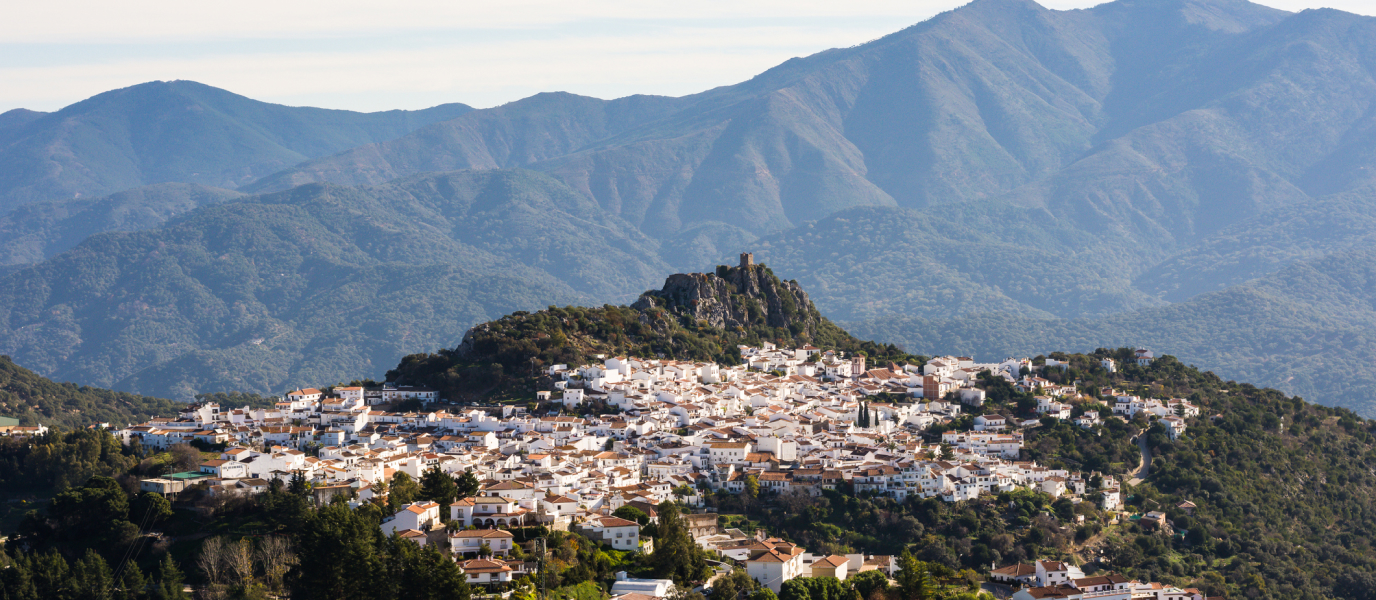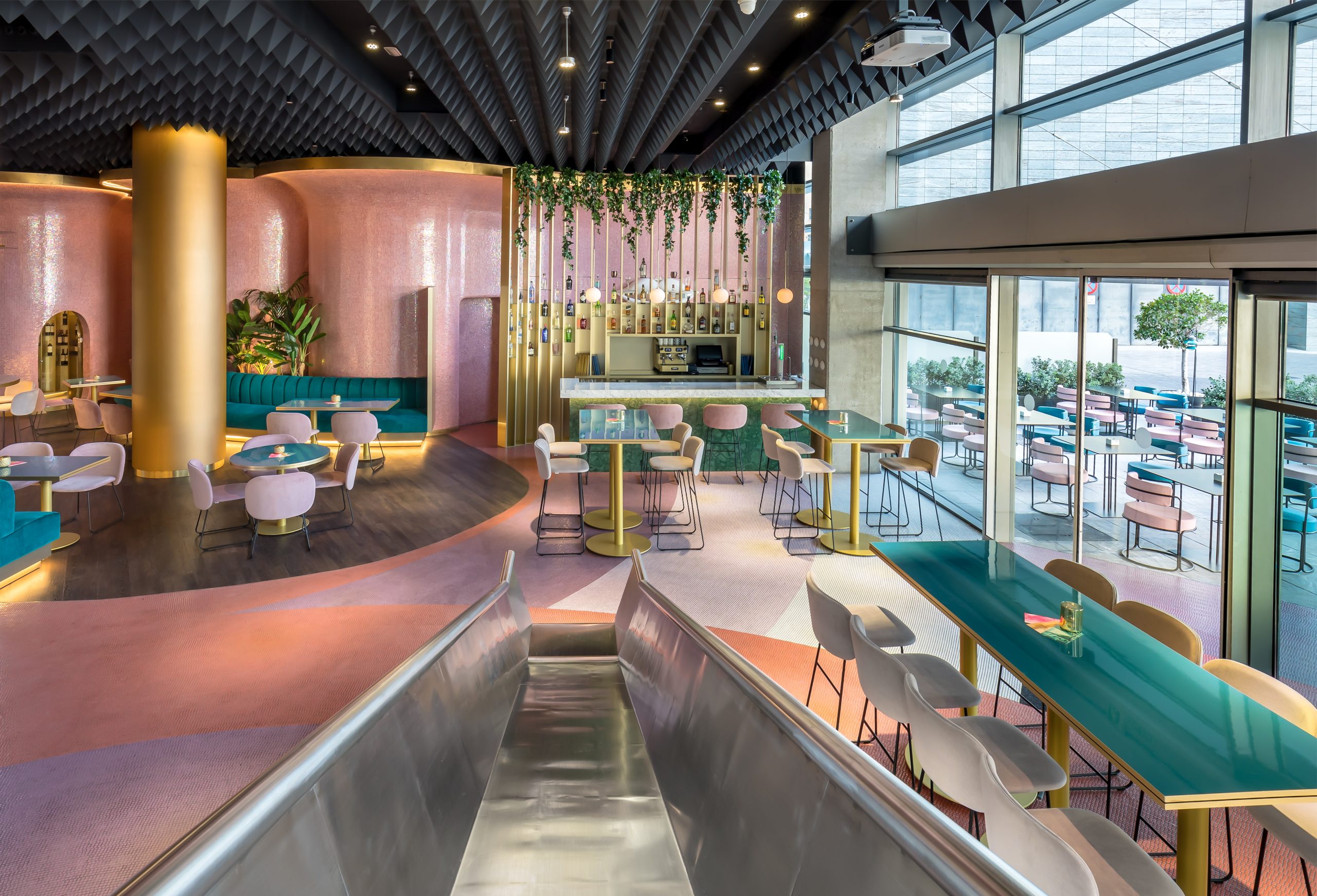Only 100 kilometres to the west of Málaga, perched on the top of a plateau sliced through by the River Guadalevín, stands the proud city of Ronda, the third most visited city in Andalusia. There are endless reasons to visit this ancient, picturesque place, known as Arunda by the Celts who founded it in the sixth century AD. They were followed by the Phoenicians, the Romans, the Moors and, finally, the Christians who, led by the Catholic Monarchs [Ferdinand and Isabella] reconquered Ronda in 1485. A walled city steeped in legends of bandits and bullfighters, Ronda acquired its romantic aura through the stories of nineteenth-century writers and foreign travellers such as Washington Irving, Prosper Mérimée and Paul Gustave Doré. The myth persisted into the twentieth century, with the Bohemian-Austrian poet Rainer Maria Rilke who, after travelling throughout Europe, settled in Ronda for two months, and dubbed it the “dream city”: “I have searched everywhere for my dream city, and at last I have found it in Ronda… There is nothing more surprising in Spain than this wild, mountain city”. Ronda’s universally recognised emblem is its Puente Nuevo, the bridge which links the old and new parts of the city across an abyss 100 metres deep.
Related experiences
What to do in Ronda: a stroll around the essential sights
In this walk around Ronda, we will take in the most interesting monuments of this age-old city, which has traditionally been divided into three neighbourhoods: modern Ronda, which lies to the north, developed from the sixteenth century onwards, and is called El Mercadillo; it is connected by the Puente Nuevo and other bridges with the city’s historic centre, known as La Ciudad, located to the south of the River Guadalevín. Lastly, the southernmost and highest part of Ronda, and the oldest part of the city, the neighbourhood of San Francisco contains the remains of the Moorish fortress and the city wall, which had been constructed on the site of the Roman castle Castillo del Laurel.
- Ronda’s Bullring: It is no coincidence that in the north of Ronda, the birthplace of modern bullfighting, stands the oldest and most imposing bullring in Spain. Built in the late seventeenth century by the Real Maestranza de Caballería de Ronda [Royal Cavalry], an institution established to ensure the survival of equestrian skills, this is an elegant, graceful bullring where, every September since 1954, the famous corridas goyescas [Goya bullfights] have been held, transporting spectators back to the time of Goya.
- The Alameda del Tajo: Close to the Bullring is this beautiful tree-lined walk dating from the early nineteenth century (with some trees over 200 years old). The walk overlooks Ronda’s famous Tajo, or gorge, and offers spectacular views of the surrounding countryside and the Serranía [mountain ranges]. The best views can be seen from the Mirador del Coño, so called because “Coño!” [a slang exclamatory expression in Spanish] is said to be the first word people utter when they catch sight of it.
- Puente Nuevo: Completed in 1793, this 98-metre-high architectural masterpiece spans the Tajo de Ronda, linking the old quarter with the modern area of El Mercadillo, and is the most widely recognised emblem of the city. There is little else to say: the best thing is to cross the bridge and be thrilled by the incredible, dizzying, panoramic views.
- Palacio de Mondragón: Once you are in the historic quarter, this is a sight that you really should not miss. This Mudéjar-Renaissance palace was the residence of the Moorish kings of the Taifa of Ronda and, subsequently, of the rulers of the Nasrid kingdom of Granada—until the city was taken by the Catholic Monarchs in 1485. It is currently Ronda’s Municipal Museum, and a visit there gives you a chance to see the palace’s beautiful interior courtyards.
- The Church of Santa María la Mayor: Built after the Christian reconquest on the site of Ronda’s former Great Mosque, this fourteenth-century church still retains Moorish features, such as the remains of the mihrab. Outstanding features of this Gothic-style church include later elements such as the Renaissance choir and the Baroque altarpiece of the Virgen del Mayor Dolor.
- Casa del Rey Moro [the Moorish King’s House]: Located on the edge of the gorge overlooking the River Guadalevín, this complex consists of three elements: an eighteenth-century Neo-Mudéjar-style house (not open to the public), a water-storage system from the time of the Muslim occupation, and some very attractive terraced gardens designed by the French landscaper Forestier in 1923. From the garden, a number of vertiginous steps lead down to the banks of the Guadalevín.
- Puerta de Almocábar: In the south of Ronda, in the neighbourhood of San Francisco, we can see the remains of the Moorish city walls and the awe-inspiring, thirteenth-century Puerta de Almocábar, the gateway into the city in the time of the Moors.
- Ronda’s Arab Baths: At the foot of the walls can be found this thirteenth-century hammam, the best preserved Arab baths in the entire Iberian Peninsula. It was supplied with water from the nearby Arroyo de las Culebras, by means of a waterwheel which is still perfectly preserved.
Where to eat in Ronda: the best restaurants
For an aperitif, the Plaza del Socorro and the neighbouring streets are a good place to enjoy tapas on the numerous terraces. For lunch or dinner, there are reputable local establishments specialising in traditional cuisine, such as the Pedro Romero restaurant which, since 1971 has been offering typical dishes including migas serranas [a peasant dish based on breadcrumbs], partridge with beans, and its most popular dish, oxtail.
Other eminent restaurants providing the finest Andalusian cuisine are the Mesón Carmen la de Ronda and Casa María, which also offer charming service and a family atmosphere. Or there is the Parador Nacional de Ronda (state-owned hotel), which has an Andalusian and Mediterranean restaurant, or El Manzel de Ronda which specialises in the traditional cuisine of the province of Málaga.
Anything else you’d like? Discover the Serranía de Ronda
If you have time to pay a visit to the surrounding area, be sure to take in the Serranía de Ronda, a remarkable mountainous landscape which includes several natural parks. There is, for example, Los Alcornocales, which conserves the last remnant of Europe’s rainforest thanks to an almost tropical micro-climate, or the natural park of the Sierra de Grazalema, whose unexpected claim to fame is that it experiences the heaviest rainfall in Spain.
Finally, don’t miss the Sierra de las Nieves Natural Park, home to the pinsapo, a species of fir tree that only grows in the Serranía de Ronda. In this unique landscape, you can also find the GESM abyss which at 1,100 metres is the third deepest in the world.




































































